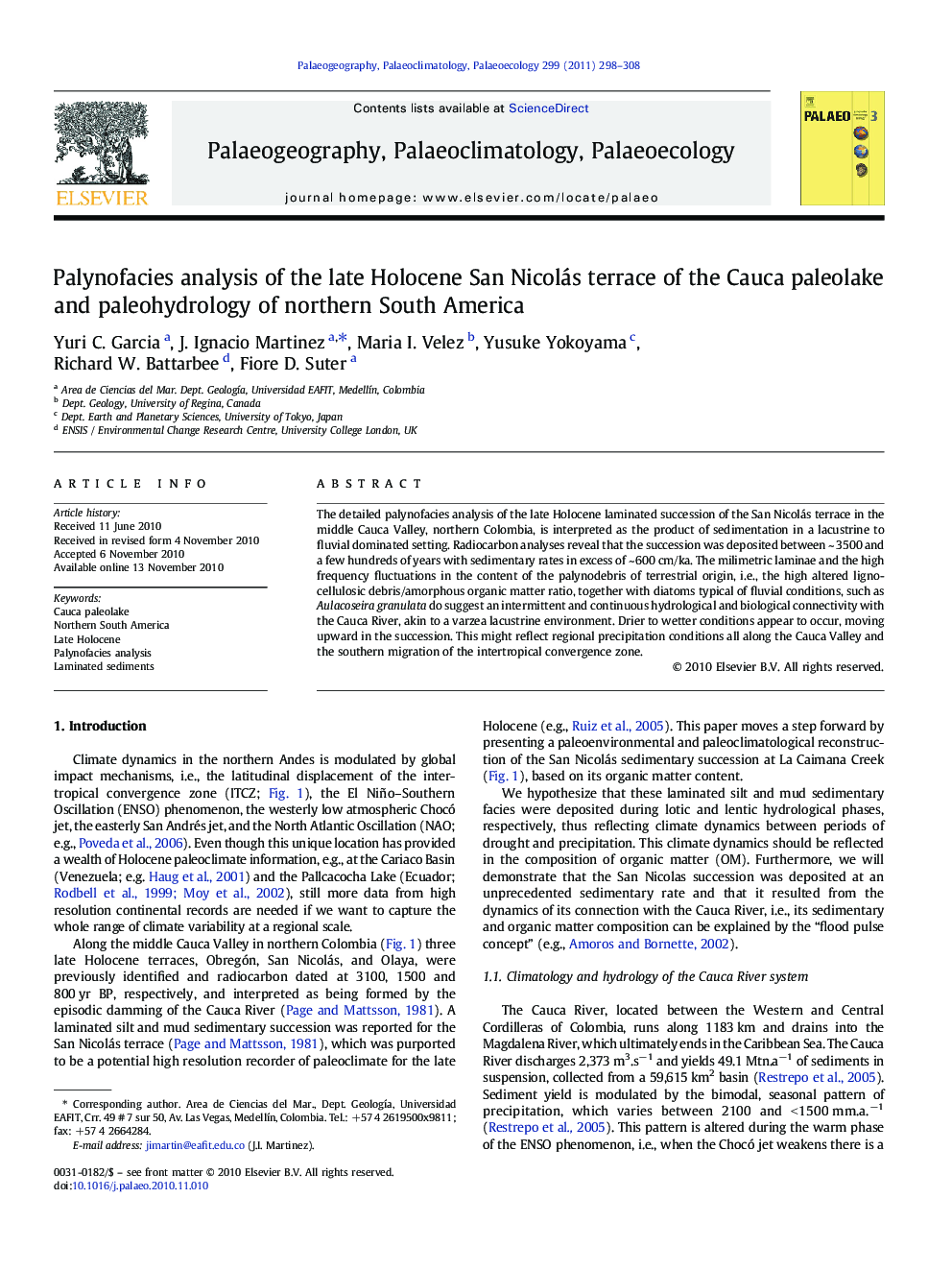| Article ID | Journal | Published Year | Pages | File Type |
|---|---|---|---|---|
| 6350705 | Palaeogeography, Palaeoclimatology, Palaeoecology | 2011 | 11 Pages |
The detailed palynofacies analysis of the late Holocene laminated succession of the San Nicolás terrace in the middle Cauca Valley, northern Colombia, is interpreted as the product of sedimentation in a lacustrine to fluvial dominated setting. Radiocarbon analyses reveal that the succession was deposited between ~Â 3500 and a few hundreds of years with sedimentary rates in excess of ~Â 600Â cm/ka. The milimetric laminae and the high frequency fluctuations in the content of the palynodebris of terrestrial origin, i.e., the high altered ligno-cellulosic debris/amorphous organic matter ratio, together with diatoms typical of fluvial conditions, such as Aulacoseira granulata do suggest an intermittent and continuous hydrological and biological connectivity with the Cauca River, akin to a varzea lacustrine environment. Drier to wetter conditions appear to occur, moving upward in the succession. This might reflect regional precipitation conditions all along the Cauca Valley and the southern migration of the intertropical convergence zone.
